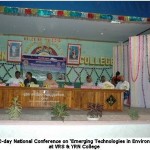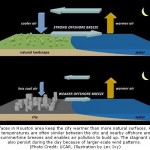Key Findings from the Summary for Policymakers
- Of the around 300 Gigawatts (GW) of new electricity generating capacity added globally between 2008 and 2009, 140 GW came from renewable energy.
- Despite global financial challenges, renewable energy capacity grew in 2009 – wind by over 30 percent; hydropower by 3 percent; grid-connected photovoltaics by over 50 percent; geothermal by 4 percent; solar water/heating by over 20 percent and ethanol and biodiesel production rose by 10 percent and 9 percent respectively.
- Developing countries host more than 50 percent of current global renewable energy capacity.
- Most of the reviewed scenarios estimate that renewables will contribute more to a low carbon energy supply by 2050 than nuclear power or fossil fuels using carbon capture and storage (CCS).
- The technical potential of renewable energy technologies exceeds the current global energy demand by a considerable amount – globally and in respect of most regions of the world.
- Under the scenarios analyzed in-depth, less than 2.5 percent of the globally available technical potential for renewables is used – in other words over 97 percent is untapped underlining that availability of renewable source will not be a limiting factor.
- Accelerating the deployment of renewable energies will present new technological and institutional challenges, in particular integrating them into existing energy supply systems and end use sectors.
- According to the four scenarios analyzed in detail, the decadal global investments in the renewable power sector range from 1,360 to 5,100 billion US dollars to 2020 and 1,490 to 7,180 billion US dollars for the decade 2021 to 2030. For the lower values, the average yearly investments are smaller than the renewable power sector investments reported for 2009.
- A combination of targeted public policies allied to research and development investments could reduce fuel and financing costs leading to lower additional costs for renewable energy technologies.
- Public policymakers could draw on a range of existing experience in order to design and implement the most effective enabling policies – there is no one-size-fits-all policy for encouraging renewables.
Key Renewable Energy Technologies and their Potential
Bioenergy technologies can generate electricity, heat and fuels from a range of ‘feedstocks’. Some bioenergy systems, including ones that involve converting land into agricultural biomass and energy crops, can generate more greenhouse gas emissions than they save.
But others, such as advanced conversion systems, which for example convert woody wastes into liquid fuels, can deliver 80 percent to 90 percent emission reductions compared to fossil fuels.
Bioenergy, mainly for traditional cooking and heating in developing countries, currently represents over 10 percent of global energy supply or ca. 50 Exajoules per year. While the share of bioenergy in the overall renewables mix is likely to decline over the coming decades, it could supply 100 to 300 Exajoules of energy by 2050, the expert review concludes.
Direct Solar Energy technologies include photovoltaics and concentrating solar power (CSP). They can produce electricity, heat and light. Currently, direct solar contributes only a fraction of one percent to total global energy supply.
Potential deployment scenarios range from a marginal role of direct solar energy in 2050 to one of the major sources of energy supply. The actual deployment will depend on continued innovation, cost reductions and supportive public policies.
In the most ambitious climate stabilization scenarios, solar primary energy supply by 2050 reaches up to 130 Exajoules per year, which can be attributed to a large extent to photovoltaic electricity generation. In some scenarios, its share in global electricity generation reaches up to a third by 2050, but in the majority of scenarios remains below one tenth.
Geothermal Energy utilizes heat stored in the Earth’s interior directly or to generate electricity, with currently about 0.7 Exajoule per year. By 2050, geothermal deployment could meet more than 3 percent of global electricity demand and about 5 percent of the global heat demand.
Global geothermal technical potential is comparable to the global primary energy supply in 2008. However, Geothermal Energy does not reach the technical potential limit in any of the scenarios analyzed, with the deployment rate remaining below 5 percent for both the regional and global level.
Hydropower projects encompass dam projects with reservoirs, run-of-river and in-stream projects and range from small to large scale. The installed capacity by the end of 2008 contributed 16 percent of worldwide electricity supply, making hydropower the largest renewable energy source in the electricity sector.
According to long term scenarios, Hydropower’s share in global electricity supply may decrease to 10 to 14 percent. Despite absolute growth in hydropower supply, the expected energy demand growth and continuing electrification could result in a decreasing share.
Ocean Energy technologies are diverse and use the kinetic, thermal, and chemical energy of seawater. Most are at the demonstration and pilot project phases. Due to its nascent stage of development, they are unlikely to significantly contribute to global energy supply before 2020.
Ocean energy is currently only represented in very few scenarios. As shown by the review, projected deployments could result in energy delivery of up to 7 Exajoules per year by 2050.
Wind Energy’s primary application of relevance to climate change mitigation is to produce electricity from large wind turbines located on land or offshore. The wind power capacity installed by the end of 2009 met close to two percent of worldwide electricity demand.
The review shows a high expansion rate in Europe, North America and, more recently, in China and India. A greater geographical distribution of deployment is likely to be needed to achieve the higher deployments indicated by the scenario literature. Under the demand projection of some scenarios global wind power share grows to more than 20 percent by 2050.
Notes:
- The Special Report on Renewable Energy Sources and Climate Change Mitigation (SRREN) assesses the potential contribution of renewable energy sources to climate change mitigation. Following the AR4, many governments as well as important actors in civil society and the private sector asked for more substantial information and broader coverage of all questions pertaining to the use of renewable energy. The 25th Plenary Session of the IPCC at Mauritius decided to hold a scoping meeting for a possible Special Report, following the scoping meeting in Lübeck, Germany in January 2008, IPCC Plenary in Budapest in April 2008 decided to prepare an IPCC Special Report on Renewable Energy Sources and Climate Change Mitigation (SRREN) and agreed on its outline. The Summary for Policymakers of the SRREN was approved by the Eleventh Plenary Session of IPCC Working Group III in Abu Dhabi, United Arab Emirates, 5-8 May 2011 and was launched on 9 May.
- The Intergovernmental Panel on Climate Change (IPCC) is the leading international body for the assessment of climate change. It was established by the United Nations Environment Programme (UNEP) and the World Meteorological Organization (WMO) in 1988 to review and assess the most recent scientific, technical and socio-economic information produced worldwide relevant to the understanding of climate change. It does not conduct any research nor does it monitor climate related data. The UN General Assembly endorsed the action by WMO and UNEP in jointly establishing the IPCC.
- The IPCC Plenary is open to all member countries of the United Nations and WMO. Currently 194 countries are members of the IPCC. Governments participate in the review process and the Plenary Sessions, where main decisions about the IPCC work programme are taken and reports are accepted, adopted and approved. The IPCC Bureau Members, including the Chair, are elected during the Plenary Sessions.
- The Working Group III (WGIII) ‘Mitigation of Climate Change’ of the IPCC assesses all relevant options for mitigating climate change through limiting or preventing greenhouse gas emissions and enhancing activities that remove them from the atmosphere. WGIII analyses the costs, benefits and risks of the different approaches to mitigation, considering also the available domestic instruments and policy measures as well as international arrangements. The WGIII is co-chaired by Ottmar Edenhofer of the Potsdam Institute for Climate Impact Research, Germany, Ramon Pichs of the Centro de Investigaciones de la Economía Mundial, Cuba, and Youba Sokona (Mali) of the Africa Climate Policy Center in Ethiopia.
Source: IPCC.














